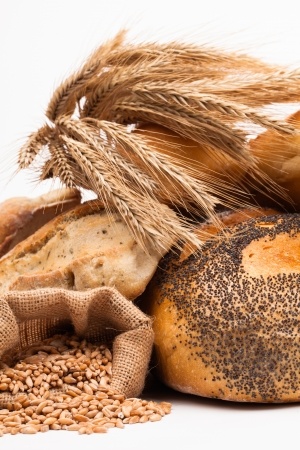 High fiber diets have been linked to a decrease in colon cancer, create longer lasting fullness, and can be great for the heart. There are several natural, high-fiber sources that offer excellent nutritional value and functional health benefits for food and beverage products.
High fiber diets have been linked to a decrease in colon cancer, create longer lasting fullness, and can be great for the heart. There are several natural, high-fiber sources that offer excellent nutritional value and functional health benefits for food and beverage products.
Knowing the difference between insoluble and soluble fibers can also help in formulating products that serve as a viable fiber source. Soluble fibers dissolve in water, form a gel, and help regulate blood sugar levels. Insoluble fibers are good for the gut, as they remain intact and help the passage of food through the body. Hydrocolloids can help with gelling, emulsification, aeration, and encapsulation. Most polysaccharide hydrocolloids are also a natural soluble fiber source, and can help with claims for fiber content.
News Drill Down
- One Green Planet lists 10 natural foods that are rich in fiber for use in formulations like a smoothie
- WebMD explains the differences and benefits of the different forms of fiber and lists some natural sources and health benefits of each.
- A study completed by the University of Pittsburgh shows a dramatic decrease in risk for colon cancer as the result of a high in fiber diet in only a two week period.
- Food Business News lists the importance of hydrocolloids in dairy product formulation, and how some hydrocolloids are are a natural fiber source.
- Clinical Advisor talks about the role fibers can play in prebiotics, which promote a healthy gut.
Reading List
One Green Planet: Healthy, Fiber-Rich Foods to Add to Your Smoothie to Stay Fuller Longer
WebMD: Dietary Fiber: Insoluble vs. Soluble
Pittsburgh Post Gazette: Pitt study’s food swap confirms risks of colon cancer
Food Business News: Hydrocolloids: Managing moisture and more
Clinical Advisor: Dietary fiber: The prebiotic connection
Material Resources:
Check out some of these fiber sources in Prospector (European links)
The views, opinions and technical analyses presented here are those of the author or advertiser, and are not necessarily those of ULProspector.com or UL Solutions. The appearance of this content in the UL Prospector Knowledge Center does not constitute an endorsement by UL Solutions or its affiliates.
All content is subject to copyright and may not be reproduced without prior authorization from UL Solutions or the content author.
The content has been made available for informational and educational purposes only. While the editors of this site may verify the accuracy of its content from time to time, we assume no responsibility for errors made by the author, editorial staff or any other contributor.
UL Solutions does not make any representations or warranties with respect to the accuracy, applicability, fitness or completeness of the content. UL Solutions does not warrant the performance, effectiveness or applicability of sites listed or linked to in any content.



Leave a Reply or Comment